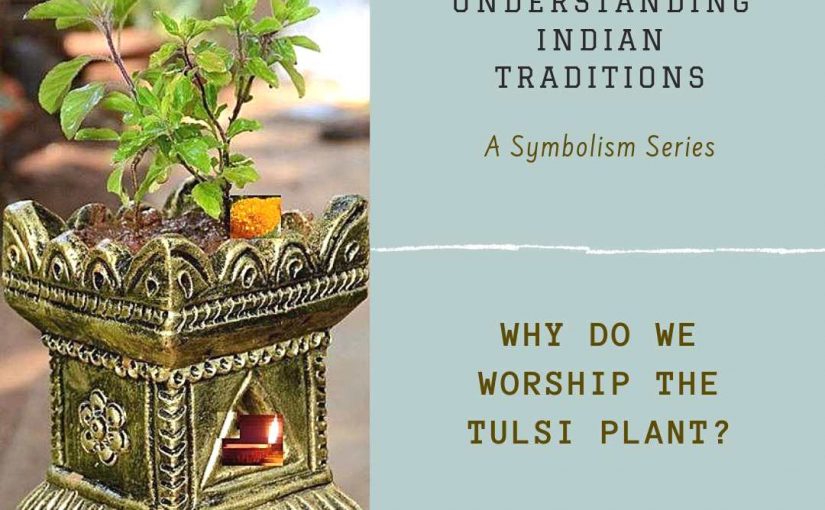In Sanskrit, tulasi is that which is incomparable (in its qualities) – tulana nasti athaiva tulasi. For Indians it is one of the most sacred plants. In fact it is known to be the only thing used in the ritualistic worship (puja), which, once used, can be washed and reused again – as it is considered self-purifying. As one story goes, Vrnda was the devoted wife of Jalandhara, a celestial being.
She believed that Lord Krsna tricked her into sinning. So she cursed Him to become a stone (Saligrama). Seeing her devotion and adherence to righteousness, the Lord blessed her saying that she would become the worshipped plant, tulasi – that would adorn His head. He also declared that all offerings would be incomplete without the tulasi leaf – hence the worship of tulasi.
She also symbolises Goddess Lakshmi, the consort of Lord Vishnu. Those who wish to be righteous and have a happy family life, worship the tulasi. Tulasi is married to the Lord with all pomp and show as in any wedding. This is because, according to another legend, the Lord blessed her that she would be His consort.
Satyabhama once tried to weigh Lord Krsna with her legendary wealth. The scales did not balance, even with her entire wealth. Finally Rukmini placed a single tulasi leaf along with the wealth on the scale. Her devoted offering of the sacred tulasi balanced the scales.
Thus the Tulasi played the vital role of demonstrating to the world that even a small object offered with devotion, means more to the Lord than all the wealth in the world. It also shows that anything endowed with righteousness, becomes invaluable. The tulasi leaf has great medicinal value and is used to cure various ailments, including the common cold.
